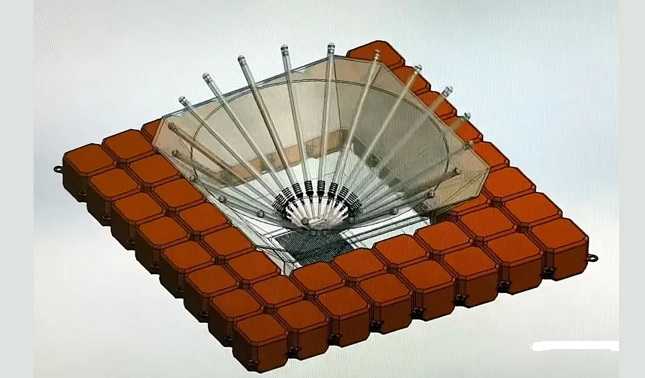- cross-posted to:
- technology@lemmy.ml
- futurology@chat.maiion.com
- cross-posted to:
- technology@lemmy.ml
- futurology@chat.maiion.com
Offers better brine handling and produces higher-purity water, making it ideal for offshore green hydrogen production. Sustainable and efficient solution with low environmental impact.



I’m wondering if the “amazing” part is that its just physically smaller? It says less brine which means either its not pumping through a ton of seawater…or some how making the salt go somewhere. So I’m thinking its that its a small foot print and cheap materials meaning that its accessible to more people.
From some digging the “amazing” part is that it’s floating. I’m not sure how they do distribution and collection, but from the UMA page it’s a vapor distillation process - same as the old survival distillation process but on a floating platform. Solar energy heats the water, evaporating some, and it is passed over a cooler to condense the water. The “no brine” claim comes from the fact that they so inefficient that the localize increase in brine concentration due to the extraction of desalinated water is within the limits for not requiring treatment - they’re just lifting evaporate from the surface and (I’m guessing) using a low power circulation loop to draw water from below the surface as their condensation cooling loop. I suppose it’s possible that the cooling may even be a convectively driven vs a photoelectric conversion and standard pump, which would be useful for low maintenance. It’s a cool project, no doubt. I’m still not sure how they’re doing bulk collection and distribution of 1000kg of water a day. Maybe that’s the 17% energy figure. Maybe it’s someone else’s problem to solve.
Thanks for digging
I appreciate that you dug this up. That’s actually sort of cool little project.
The problem with the old condensation technique (other then the fact that it is naturally inefficient) is that depending on where you are and air currents you can’t always depend on a great output when humidity drops. This solves that problem as the ocean is constantly evaporating. But that also means that this is just a project that can’t go much further, as you can’t really scale it for global use. There is a finite amount of humidity in the air, and absorbing it from one place just reduces it in another. You would be better off just floating giant rain collectors into the ocean… at least then you’re only stealing water that would have became salinated anyway.